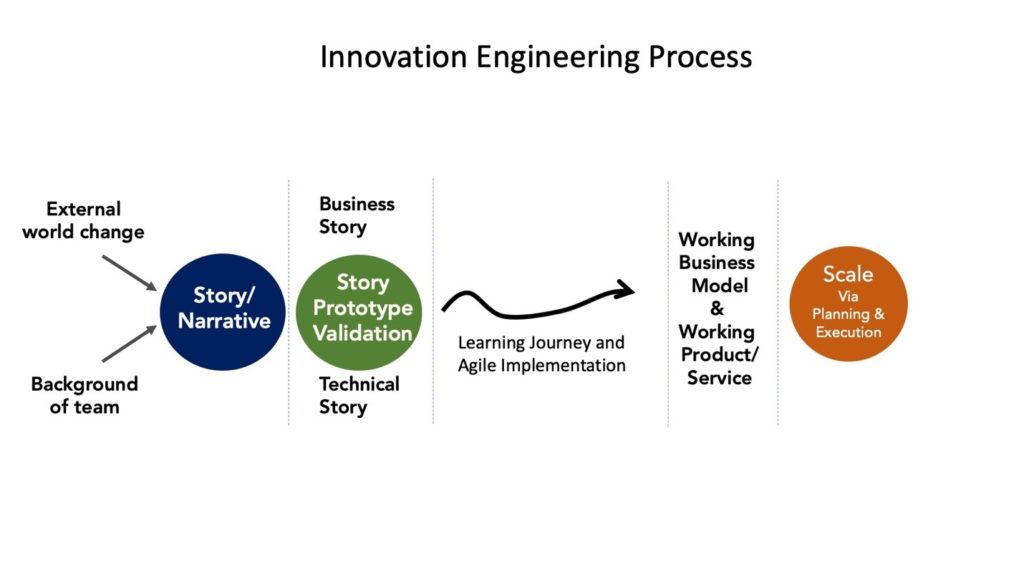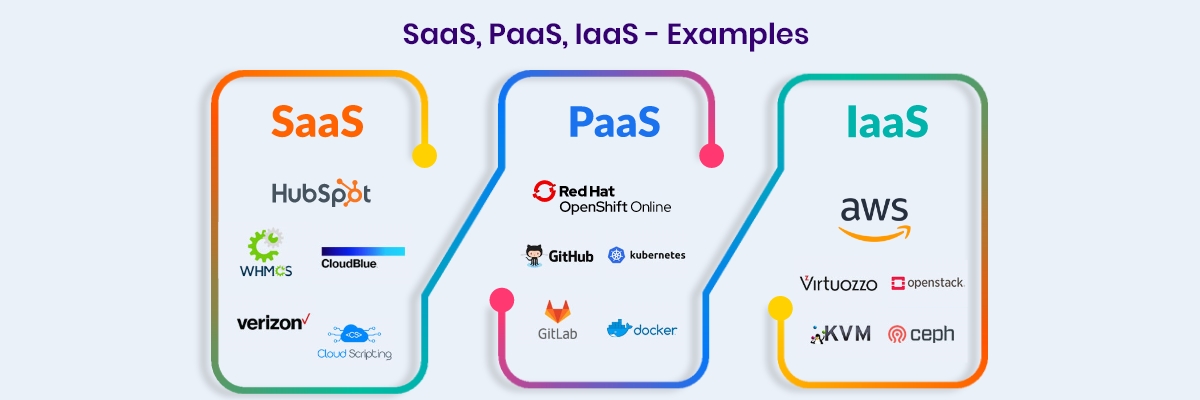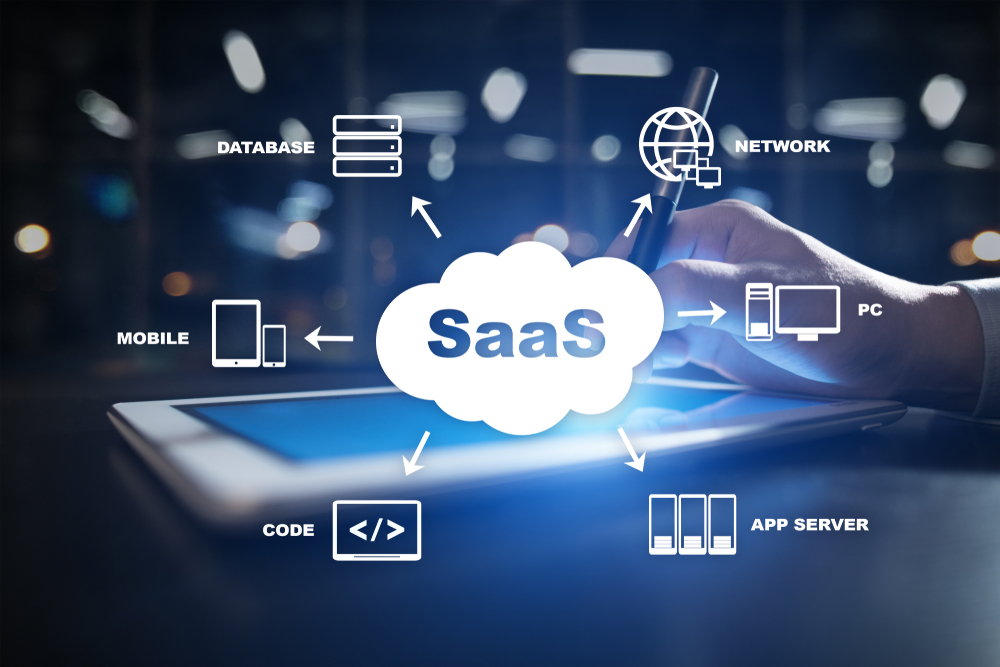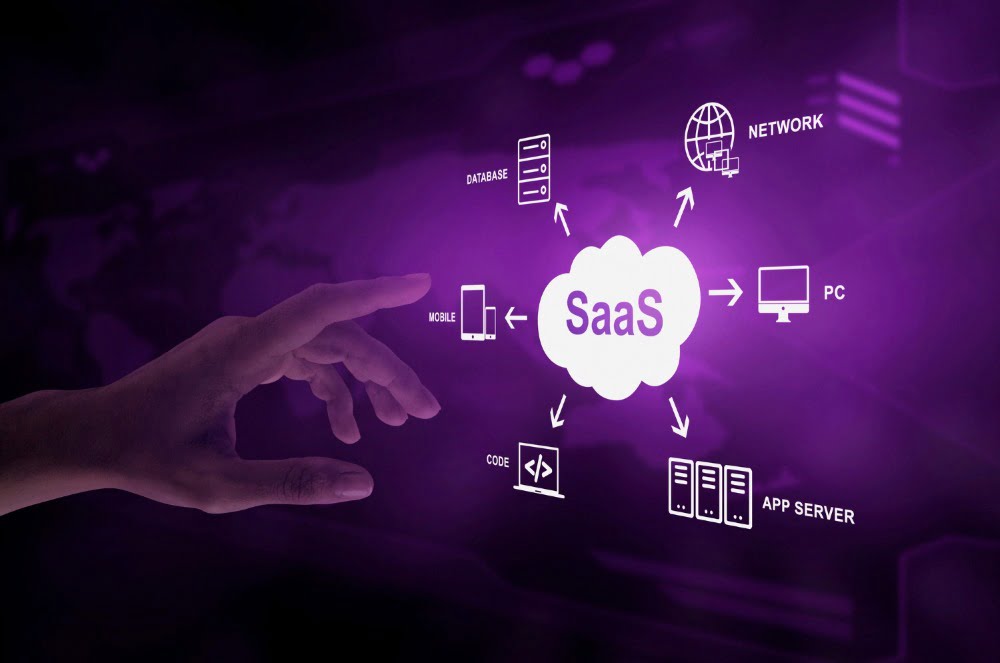Why Safety Engineering Matters in SaaS Development
Safety engineering is a critical component of SaaS development, as it ensures the reliability, security, and performance of software applications. Neglecting safety protocols can have severe consequences, including data breaches, system downtime, and reputational damage. On the other hand, prioritizing safety in the development process can lead to numerous benefits, such as improved customer trust, reduced liability, and enhanced competitiveness. SaaS startups that invest in safety engineering innovation strategies can gain a competitive edge in the market, as they are better equipped to mitigate potential risks and ensure the overall quality of their software applications.
One of the primary reasons safety engineering matters in SaaS development is that it helps to identify and mitigate potential risks. By conducting thorough risk assessments and creating safety protocols, SaaS startups can minimize the likelihood of errors, bugs, and security vulnerabilities. This, in turn, can lead to improved software reliability, reduced downtime, and enhanced customer satisfaction. Furthermore, safety engineering can also help SaaS startups to comply with regulatory requirements, such as data protection and privacy laws, which is essential for maintaining customer trust and avoiding costly fines.
In addition to risk mitigation and regulatory compliance, safety engineering can also drive innovation in SaaS development. By leveraging emerging technologies, such as artificial intelligence and machine learning, SaaS startups can create more robust and resilient software applications that can adapt to changing customer needs and market conditions. This can lead to improved customer engagement, increased revenue, and enhanced competitiveness in the market. Moreover, safety engineering can also facilitate collaboration and knowledge-sharing among developers, which can lead to improved software quality, reduced bugs, and faster time-to-market.
Overall, safety engineering is a critical component of SaaS development that can drive innovation, improve software quality, and enhance customer trust. By prioritizing safety protocols and investing in safety engineering innovation strategies, SaaS startups can gain a competitive edge in the market and achieve long-term success. As the SaaS industry continues to evolve, it is essential for startups to recognize the importance of safety engineering and make it a core part of their development process.
How to Implement a Safety-First Approach in Your SaaS Startup
Implementing a safety-first approach in a SaaS startup requires a structured and systematic approach. Here’s a step-by-step guide to help you get started:
Step 1: Conduct a Risk Assessment
Identify potential safety risks associated with your SaaS application, including data breaches, system downtime, and security vulnerabilities. Use tools like risk assessment templates and threat modeling to help you identify and prioritize potential risks.
Step 2: Create Safety Protocols
Develop safety protocols that outline procedures for mitigating potential risks. This may include incident response plans, disaster recovery plans, and security protocols. Ensure that your safety protocols are aligned with industry best practices and regulatory requirements.
Step 3: Train Employees
Provide regular training to employees on safety protocols and procedures. This may include training on incident response, security awareness, and data protection. Ensure that employees understand their roles and responsibilities in maintaining a safety-first approach.
Step 4: Implement Automation and AI
Leverage automation and AI to enhance safety engineering in your SaaS startup. Use tools like automated testing, continuous integration, and continuous deployment to identify and mitigate potential safety risks. AI-powered tools can also help you detect and respond to security threats in real-time.
Step 5: Continuously Monitor and Evaluate
Continuously monitor and evaluate your safety-first approach to ensure its effectiveness. Use metrics like mean time to detect (MTTD) and mean time to respond (MTTR) to measure the effectiveness of your incident response plan. Regularly review and update your safety protocols to ensure they remain aligned with industry best practices and regulatory requirements.
By following these steps, you can implement a safety-first approach in your SaaS startup and ensure the reliability, security, and performance of your software application. Remember to continuously monitor and evaluate your approach to ensure its effectiveness and stay ahead of emerging safety risks.
By prioritizing safety engineering innovation strategies, SaaS startups can gain a competitive edge in the market and achieve long-term success. By implementing a safety-first approach, you can ensure the trust and confidence of your customers, reduce the risk of security breaches and system downtime, and improve the overall quality of your software application.
Leveraging Technology to Enhance Safety Engineering in SaaS
Technology plays a crucial role in enhancing safety engineering in SaaS startups. By leveraging automation, artificial intelligence, and data analytics, SaaS startups can identify and mitigate potential safety risks more effectively. In this section, we’ll explore the role of technology in safety engineering and provide examples of how SaaS startups can use technology to improve their safety engineering practices.
Automation is a key technology that can enhance safety engineering in SaaS startups. Automated testing, for example, can help identify potential safety risks and vulnerabilities in software applications. Automated testing tools can simulate various scenarios and identify potential issues before they become major problems. Additionally, automation can help streamline safety protocols and procedures, reducing the risk of human error and improving overall safety.
Artificial intelligence (AI) is another technology that can enhance safety engineering in SaaS startups. AI-powered tools can analyze large amounts of data and identify potential safety risks and vulnerabilities. AI can also help predict potential safety issues before they occur, allowing SaaS startups to take proactive measures to prevent them. For example, AI-powered tools can analyze user behavior and identify potential security risks, such as phishing attacks or malware.
Data analytics is also a critical technology for safety engineering in SaaS startups. Data analytics can help SaaS startups identify potential safety risks and vulnerabilities by analyzing large amounts of data. Data analytics can also help SaaS startups track key performance indicators (KPIs) and metrics, such as mean time to detect (MTTD) and mean time to respond (MTTR). By tracking these metrics, SaaS startups can measure the effectiveness of their safety engineering practices and make data-driven decisions to improve them.
Examples of SaaS startups that have successfully leveraged technology to enhance safety engineering include Slack and Zoom. Slack, for example, uses automation and AI-powered tools to identify and mitigate potential security risks. Zoom, on the other hand, uses data analytics to track KPIs and metrics, such as MTTD and MTTR, to measure the effectiveness of its safety engineering practices.
In conclusion, technology plays a critical role in enhancing safety engineering in SaaS startups. By leveraging automation, AI, and data analytics, SaaS startups can identify and mitigate potential safety risks more effectively. By incorporating these technologies into their safety engineering practices, SaaS startups can improve their overall safety and security, reducing the risk of security breaches and system downtime.
Best Practices for SaaS Startups to Ensure Safety Engineering Excellence
To ensure safety engineering excellence, SaaS startups should follow best practices that prioritize safety and security. Here are some best practices to consider:
Regular Safety Audits
Regular safety audits are essential to identify potential safety risks and vulnerabilities in SaaS applications. Safety audits should be conducted regularly, ideally every quarter, to ensure that safety protocols and procedures are up-to-date and effective. Safety audits should also include testing and validation of safety controls to ensure they are functioning as intended.
Continuous Employee Training
Continuous employee training is critical to ensure that employees understand safety protocols and procedures. Employee training should include regular training sessions, workshops, and online courses to ensure that employees are up-to-date with the latest safety best practices. Employee training should also include training on incident response and reporting to ensure that employees know how to respond to safety incidents.
Incident Reporting and Response
Incident reporting and response are critical components of safety engineering excellence. SaaS startups should have an incident reporting and response plan in place to ensure that safety incidents are reported and responded to promptly. Incident reporting and response plans should include procedures for reporting incidents, responding to incidents, and conducting post-incident reviews to identify root causes and implement corrective actions.
Collaboration and Communication
Collaboration and communication are essential to ensure safety engineering excellence. SaaS startups should foster a culture of collaboration and communication among employees, stakeholders, and customers to ensure that safety concerns are reported and addressed promptly. Collaboration and communication should also include regular meetings, workshops, and training sessions to ensure that employees are aware of safety protocols and procedures.
Continuous Improvement
Continuous improvement is critical to ensure safety engineering excellence. SaaS startups should continuously monitor and evaluate safety protocols and procedures to identify areas for improvement. Continuous improvement should also include regular reviews of safety incidents, near misses, and safety concerns to identify root causes and implement corrective actions.
By following these best practices, SaaS startups can ensure safety engineering excellence and prioritize safety and security in their applications. By prioritizing safety and security, SaaS startups can reduce the risk of safety incidents, improve customer trust, and maintain a competitive edge in the market.
Real-World Examples of SaaS Startups that Prioritize Safety Engineering
Several SaaS startups have successfully prioritized safety engineering in their development processes, resulting in improved safety and security for their customers. Here are a few examples:
Slack
Slack, a popular communication platform for teams, has prioritized safety engineering from the outset. Slack’s safety engineering team uses a combination of automated testing, manual testing, and code reviews to identify and mitigate potential safety risks. Slack also has a robust incident response plan in place, which includes procedures for reporting and responding to safety incidents.
Zoom
Zoom, a video conferencing platform, has also prioritized safety engineering in its development process. Zoom’s safety engineering team uses a combination of automated testing, manual testing, and code reviews to identify and mitigate potential safety risks. Zoom also has a robust incident response plan in place, which includes procedures for reporting and responding to safety incidents.
Dropbox
Dropbox, a cloud storage platform, has prioritized safety engineering in its development process. Dropbox’s safety engineering team uses a combination of automated testing, manual testing, and code reviews to identify and mitigate potential safety risks. Dropbox also has a robust incident response plan in place, which includes procedures for reporting and responding to safety incidents.
These SaaS startups have demonstrated that prioritizing safety engineering is essential for building trust with customers and maintaining a competitive edge in the market. By investing in safety engineering, SaaS startups can reduce the risk of safety incidents, improve customer satisfaction, and maintain a strong reputation in the market.
In addition to these examples, there are many other SaaS startups that have prioritized safety engineering in their development processes. These startups have recognized the importance of safety engineering in building trust with customers and maintaining a competitive edge in the market.
By prioritizing safety engineering, SaaS startups can ensure that their applications are safe and secure for customers to use. This can lead to improved customer satisfaction, increased customer loyalty, and a strong reputation in the market.
Overcoming Common Challenges in SaaS Safety Engineering
SaaS startups often face common challenges when implementing safety engineering strategies. These challenges can include limited resources, competing priorities, and regulatory compliance. In this section, we’ll discuss these challenges and provide tips on how to overcome them.
Limited Resources
One of the most common challenges SaaS startups face is limited resources. This can include limited budget, limited personnel, and limited expertise. To overcome this challenge, SaaS startups can consider outsourcing safety engineering tasks to third-party vendors or hiring freelancers with safety engineering expertise.
Competing Priorities
Another common challenge SaaS startups face is competing priorities. This can include competing demands from customers, investors, and other stakeholders. To overcome this challenge, SaaS startups can prioritize safety engineering tasks based on risk and impact, and communicate the importance of safety engineering to stakeholders.
Regulatory Compliance
Regulatory compliance is another common challenge SaaS startups face. This can include compliance with industry regulations, such as HIPAA and PCI-DSS, and compliance with government regulations, such as GDPR and CCPA. To overcome this challenge, SaaS startups can work with regulatory experts to ensure compliance with relevant regulations, and implement safety engineering strategies that meet regulatory requirements.
Other Challenges
Other challenges SaaS startups may face when implementing safety engineering strategies include lack of expertise, lack of resources, and lack of support from stakeholders. To overcome these challenges, SaaS startups can consider hiring safety engineering experts, outsourcing safety engineering tasks to third-party vendors, and communicating the importance of safety engineering to stakeholders.
Best Practices for Overcoming Challenges
To overcome common challenges in SaaS safety engineering, SaaS startups can follow best practices such as:
Conducting regular risk assessments to identify potential safety risks and prioritize safety engineering tasks based on risk and impact.
Implementing safety engineering strategies that meet regulatory requirements and industry standards.
Communicating the importance of safety engineering to stakeholders, including customers, investors, and employees.
Providing regular training and support to employees on safety engineering best practices and procedures.
Continuously monitoring and evaluating safety engineering strategies to ensure their effectiveness and identify areas for improvement.
Measuring the Success of Safety Engineering Strategies in SaaS Startups
Measuring the success of safety engineering strategies in SaaS startups is crucial to ensure that the strategies are effective and efficient. In this section, we’ll discuss key performance indicators (KPIs) and metrics to track to measure the success of safety engineering strategies.
Key Performance Indicators (KPIs)
KPIs are measurable values that demonstrate how effectively an organization is achieving its objectives. In the context of safety engineering, KPIs can include metrics such as:
Mean Time to Detect (MTTD): The average time it takes to detect a security incident.
Mean Time to Respond (MTTR): The average time it takes to respond to a security incident.
Incident Response Rate: The percentage of security incidents that are responded to within a certain timeframe.
Security Incident Rate: The number of security incidents per unit of time.
Metric to Track
In addition to KPIs, there are several metrics that can be tracked to measure the success of safety engineering strategies. These metrics can include:
Security Testing Coverage: The percentage of code that is covered by security testing.
Vulnerability Remediation Rate: The percentage of vulnerabilities that are remediated within a certain timeframe.
Compliance Rate: The percentage of compliance requirements that are met.
Best Practices for Measuring Success
To measure the success of safety engineering strategies effectively, SaaS startups should follow best practices such as:
Establishing clear goals and objectives for safety engineering strategies.
Defining KPIs and metrics to track.
Collecting and analyzing data regularly.
Using data to inform decision-making and improve safety engineering strategies.
Continuously monitoring and evaluating safety engineering strategies to ensure their effectiveness and identify areas for improvement.
Future-Proofing Your SaaS Startup with Safety Engineering Innovation
Future-proofing your SaaS startup with safety engineering innovation is crucial to ensure the long-term success and sustainability of your business. In this section, we’ll discuss the importance of staying up-to-date with industry trends, regulatory changes, and emerging technologies to future-proof your SaaS startup.
Staying Up-to-Date with Industry Trends
The SaaS industry is constantly evolving, with new trends and technologies emerging every year. To future-proof your SaaS startup, it’s essential to stay up-to-date with the latest industry trends and technologies. This can include attending industry conferences, reading industry publications, and participating in online forums and discussions.
Regulatory Changes
Regulatory changes can have a significant impact on SaaS startups, particularly those that operate in highly regulated industries such as healthcare and finance. To future-proof your SaaS startup, it’s essential to stay up-to-date with regulatory changes and ensure that your safety engineering strategies are compliant with the latest regulations.
Emerging Technologies
Emerging technologies such as artificial intelligence, blockchain, and the Internet of Things (IoT) are transforming the SaaS industry. To future-proof your SaaS startup, it’s essential to stay up-to-date with the latest emerging technologies and consider how they can be used to enhance your safety engineering strategies.
Best Practices for Future-Proofing
To future-proof your SaaS startup with safety engineering innovation, consider the following best practices:
Stay up-to-date with industry trends and technologies.
Monitor regulatory changes and ensure compliance.
Consider emerging technologies and their potential impact on your safety engineering strategies.
Continuously evaluate and improve your safety engineering strategies to ensure they are effective and efficient.
By following these best practices, you can future-proof your SaaS startup with safety engineering innovation and ensure the long-term success and sustainability of your business.







